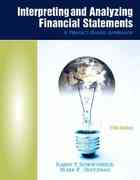Emily Patrick formed Teal Corporation a number of years ago with an investment of $200,000 cash, for which she received $20,000 in stock and $180,000 in bonds bearing interest of 8% and maturing in nine years. Several years later, Emily loaned the corporation an additional $50,000 on an open account. In the current year, Teal Corporation becomes insolvent and is declared bankrupt. During the corporation's existence, Emily was paid an annual salary of $60,000.
Complete the letter to Emily in which you explain how she would treat her losses for tax purposes.
Mal
Emily Patrick formed Teal Corporation a number of years ago with an investment of $200,000 cash, for which she received $20,000 in stock and $180,000 in bonds bearing interest of 8% and maturing in nine years. Several years later, Emily loaned the corporation an additional $50,000 on an open account. In the current year, Teal Corporation becomes insolvent and is declared bankrupt. During the corporation's existence, Emily was paid an annual salary of $60,000. Complete the letter to Emily in which you explain how she would treat her losses for tax purposes. Maloney, Young, Nellen, & Persellin, CPAs 5191 Natorp Boulevard Mason, OH 45040 June 5, 2020 Ms. Emily Patrick 36 Paradise Road Northampton, MA 01060 Dear Ms. Patrick: This letter addresses the tax treatment that applies following the bankruptcy of Teal Corporation this year. Under the facts given, Teal Corporation was formed a number of years ago with an investment of $200,000, in return for which you received $20,000 in stock and $180,000 in 8% interest-bearing bonds maturing in nine years. Later, you loaned the corporation an additional $50,000 on an open account. During the corporation's existence, you were paid an annual salary of $60,000. Because our conclusion is based on these facts, please inform us if our understanding is inaccurate. If the stock was issued pursuant to 1244 of the Internal Revenue Code, you have a $:] ordinary loss on the worthless stock. Otherwise, the investment in the stock results in treatment. A danger exists in that the IRS could argue thin capitalization and reclassify the as equity. This produces a on that portion of your investment. Also, it could contend that both the long-term debt and the $50,000 open account are June 5, 2020 Ms. Emily Patrick 36 Paradise Road Northampton, MA 01060 Dear Ms. Patrick: This letter addresses the tax treatment that applies following the bankruptcy of Teal Corporation this year. Under the facts given, Teal Corporation was formed a number of years ago with an investment of $200,000, in return for which you received $20,000 in stock and $180,000 in 8% interest-bearing bonds maturing in nine years. Later, you loaned the corporation an additional $50,000 on an open account. During the corporation's existence, you were paid an annual salary of $60,000. Because our conclusion is based on these facts, please inform us if our understanding is inaccurate. If the stock was issued pursuant to 1244 of the Internal Revenue Code, you have a $:] ordinary loss on the worthless stock. Otherwise, the investment in the stock results in treatment. A danger exists in that the IRS could argue thin capitalization and reclassify the as equity. This produces a on that portion of your investment. Also, it could contend that both the long-term debt and the $50,000 open account are bad debts and, therefore, . If the IRS makes this assertion, we would recommend that you counter with the argument by showing that the primary motive in lending the money to Teal Corporation was to . Further, if you are in the business of lending money or of buying, promoting, and selling corporations, you might be able to deduct as business bad debts. Because this is a complicated situation, please call us if we may provide further assistance. Sincerely, Sarah Mitchell, CPA








